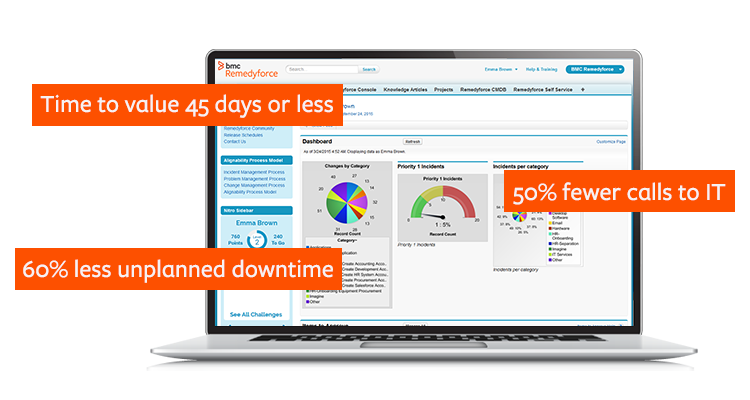You made a significant investment in a service management solution. You hired the best service management professionals and engineers to make your project successful. You even engaged a partner to accelerate your implementation project. When you subscribed to the service, you planned to leverage several capabilities to realize your business objectives. After the new solution is implemented, how do you know how well your organization is using it?
IT leaders want to align their IT organizations with best practices. They realize that the cloud saves costs. Many have chosen SaaS solutions to fulfill their service management needs. Others either have a project in flight or have one on their roadmap. All of them want to realize value out of their investments in service management cloud solutions. They may have a dashboard that shows them their key performance indicators across the entire service management spectrum. However, service managers, the ones who are measured on achieving service management goals, do not have any means of demonstrating how they are using the service management solution. What they need is a dashboard to show how they perform in various areas of the product.
Another factor that influences choosing SaaS over on-premise is the sheer pace of innovations delivered in SaaS solutions. SaaS products often deliver several major releases a year. The continual stream of value delivered by the service management solution benefits organizations only to the extent to which they leverage the capabilities. Every major release is packed with capabilities that enable organizations to have a superior experience, improve efficiencies, have granular visibility into IT assets, and reduce costs. Yet many organizations are simply unaware of the new capabilities and the value these capabilities can bring to their organizations in fulfilling the very goals for which the solutions were purchased. Adoption of product capabilities is often a limiting factor for IT organizations to get returns out of their investments.
You do not have to leverage every feature set in the product. However, you certainly want to leverage the ones that align with your goals. If service managers could measure their adoption of the various capabilities on a dashboard, they would have the necessary insights to increase the maturity of their service management organizations by adopting relevant capabilities. Of course, the adoption of new features alone does not help in realizing goals; making business process changes is often just as necessary. IT organizations can make adoption of capabilities coupled with the necessary business process changes an integral part of their continual service improvement initiatives. Unfortunately, most service management solutions lack such a dashboard.
BMC Helix Remedyforce is a service management solution designed to address the needs of modern, fast-paced organizations in the mid-market. With Remedyforce, organizations realize value within weeks, rather than wait for months with other solutions. It is deployed on the Salesforce platform, the leading cloud platform for scalability, security, and availability. Remedyforce upgrades are automated and smooth, with no loss of custom configurations and no downtime. In a recent release, Remedyforce Value Adoption Dashboard has been launched. This dashboard allows service managers to measure their adoption of Remedyforce across several areas of the product. This enables them to draw plans to leverage innovations delivered in the product with every release to improve staff productivity, grow self-service adoption, and have quality asset data. As their adoption of capabilities crosses certain thresholds, they are granted badges that signify their expertise in the solution. The badges can be shared on public social networks, giving them an opportunity to earn recognition for their accomplishments.







